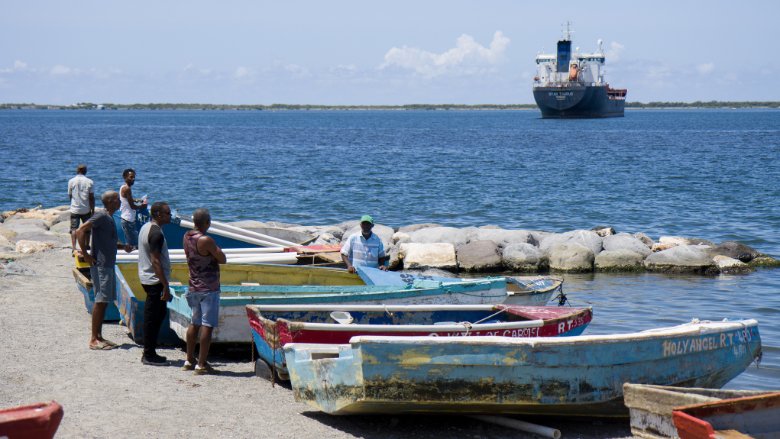Fishermen Jeffrey Chung and Frank Williams from Southside, Kingston have been launching their boats from the shoreline of the Kingston Harbour for over 25 years and have used the Port Royal Street coastline to moor their boats.
Prior to March 2020, they tied their boats to the rocks, which resulted in damage and also presented its own dangers including difficulty in transporting their catch, along with the threats of crocodiles, and theft. Now, they have access to an 80-meter beach suitable for fishing.
The scenic view, complemented by the roadway along the Kingston Harbor which has been vastly improved, is an added benefit. It now boasts one kilometer of a composite seawall and armour stone revetment structure. To add to that, upgraded drainage features, the rehabilitation and raising of one kilometre of existing roadway, and the installation of a 4.7-meter-wide boardwalk have taken the harbor headfirst into 2023.
“We’re glad for the beach. Before, there wasn’t any sand here - you couldn’t bring the boats up. You had to find a space along the wall and tie your boat with the stones or try to find an anchor. There was a lot of damage to boats - and cost us a lot. Now we can have them up on the sand. Now we feel safe. Now we have more people getting boats and bringing them over here and being able to make money”, said Jeffrey.
Due to climate change, Caribbean countries like Jamaica are increasingly faced with the threat of hurricanes, tropical storms, and heavy rainfall which often leaves communities flooded and lives and livelihoods in danger. The improvements have created a protective infrastructure along the Port Royal Street corridor to safeguard from the effects of storm surges.
Past disaster events such as flooding, landslides and storm surge physically impacted Jamaica's national infrastructure. In response to this, the Jamaica Disaster Vulnerability Reduction Project was designed with the objective 'to enhance Jamaica's resilience to disaster and climate change risk.' The project is financed by the World Bank.
As part of the project’s design, Port Royal Street was identified as an integral part of the east-west corridor transportation network in the Kingston Metropolitan Area (KMA), connecting the Norman Manley International Airport and the Downtown Kingston area. Its coastline has experienced a considerable amount of erosion in the last decade, due to the impact of successive storm surge and extreme wave events, making the situation critical for several sections of the road.
Further, there are numerous critical facilities located in the vicinity including, the Bank of Jamaica, the Jamaica Constabulary Force Commissioner’s Office, and the Urban Development Corporation. The project supported coastal defense measures (rock revetments) to protect road infrastructure in three sections along the corridor.
As part of the planning and implementation process, forums were held with community members and local non-governmental organisations from the communities of Rae Town and Southside to understand their needs and communicate implementation changes.
“We had a lot of meetings. And we have been asking for a beach for so long and thanks to this project now we have one. This is closer to our home in Southside, so we can move our catch easier” added Frank.
“I’ve been a fisherman for most of my life. A lot of people don’t know it’s dangerous- but it is. You go out to sea and you’re there for how long and you don’t know if you’ll get to go back home. But I do it to provide for my family. It’s an honest living and I wouldn’t do anything else” he concluded.
The JDVRP supports the Government of Jamaica in disaster risk management in the wider context of sustainable development, resilience to disaster and climate risk.
Natural hazards present a significant contingent liability for Jamaica comparable to others such as commodity price fluctuations and exchange rate volatility. Mitigating and adapting to these hazards such that they do not become perilous disasters bodes well for the sustainability of Jamaica’s environment and economy.

